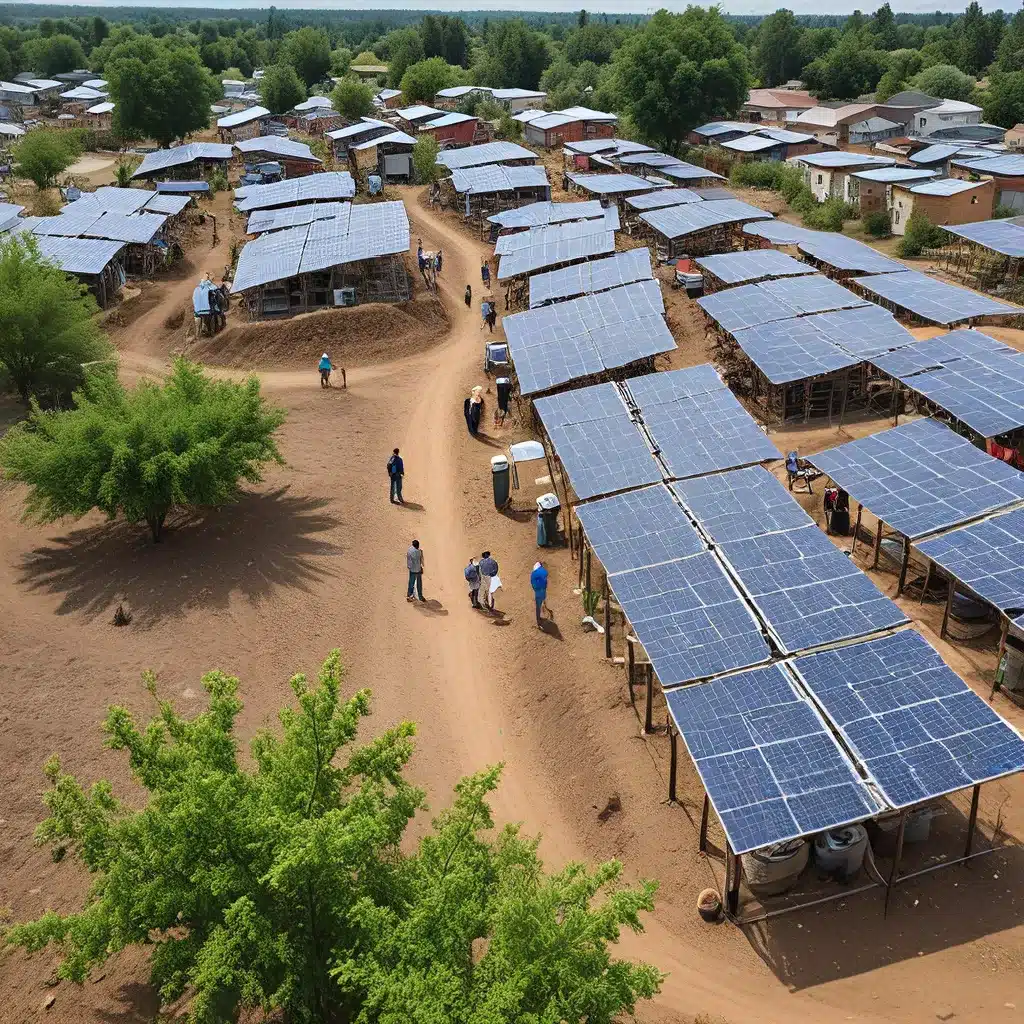
Microgrid technology has been making waves in the energy sector, and for good reason. These localized power systems are revolutionizing the way we think about electricity generation, distribution, and resilience. But what if I told you that the real game-changers are the community microgrids that are popping up around the world? These grassroots initiatives are not just transforming the energy landscape – they’re empowering local communities and driving meaningful climate solutions.
Let me take you on a journey to explore these incredible examples of community-driven innovation. Buckle up, because you’re about to witness the power of people coming together to shape a brighter, more sustainable future.
Community-Based Forest Management in Indonesia
One remarkable story comes from the KPH Way Besai initiative in Sumatra, Indonesia. This community-based forest management program is a shining example of how local engagement can yield remarkable environmental and socio-economic benefits.
Imagine a scenario where the people who live in and around the forests are the ones in charge of managing and protecting those precious resources. That’s exactly what the KPH Way Besai initiative set out to achieve. By empowering local communities with the authority and responsibility to oversee their forests, something remarkable happened.
The deforestation rate in the area plummeted by an impressive 75%. How’s that for impact? But it’s not just about the numbers. The forests started to regenerate, attracting a resurgence of diverse plant and animal species. It was like witnessing nature’s own comeback story, all thanks to the stewardship of the local community.
And the benefits didn’t stop there. The communities were able to generate alternative livelihood opportunities through sustainable timber harvesting and ecotourism. Can you picture it? Local people becoming the driving force behind conservation efforts and reaping the rewards of their dedication.
The success of the KPH Way Besai initiative illustrates the power of community engagement. When people have a direct stake in the management of their natural resources, they become fiercely committed to their preservation. It’s a lesson in the transformative potential of empowering local communities to tackle environmental challenges.
Sustainable Agriculture Cooperatives in Rwanda
Let’s hop over to Rwanda, where another inspiring story is unfolding. The Land Husbandry, Water Harvesting, and Hillside Irrigation (LWH) project is revolutionizing the way farmers approach agriculture, and it’s all thanks to the power of sustainable cooperatives.
Imagine a world where farmers are not just tilling the land, but actively restoring it. That’s the reality in Rwanda, where the LWH project has equipped farmers with the knowledge and resources to implement sustainable land management practices. And the results are nothing short of astounding.
Through techniques like agroforestry, rainwater harvesting, and watershed protection, these farmers have seen a remarkable boost in agricultural productivity, soil fertility, and erosion control. It’s a true testament to the power of working together.
But the benefits extend far beyond the fields. By joining forces in agricultural cooperatives, these farmers have gained access to training, resources, and markets. It’s a game-changer for their livelihoods, contributing to poverty reduction and resilient communities.
What’s even more impressive is the way these sustainable practices align with the principles of a circular economy. By preserving natural resources and minimizing waste, the LWH project is helping to create a more regenerative system that benefits both the environment and the people.
Solar Microgrids in Bangladesh
Now, let’s head to Bangladesh, where a Grameen Shakti initiative is turning the concept of microgrids into a transformative solution for clean energy access.
Imagine remote villages and towns that were once reliant on fossil fuels, now basking in the glow of solar power. That’s the reality Grameen Shakti is creating, one community at a time.
These decentralized solar-powered microgrids are bringing clean, affordable electricity to areas where the main grid simply couldn’t reach. But what’s truly remarkable is the way Grameen Shakti has engaged local stakeholders in the process.
By involving community members in the planning, implementation, and management of these microgrids, Grameen Shakti has fostered a deep sense of ownership and commitment. Local individuals, organizations, and institutions are empowered to take charge of their own energy futures.
The impact of these solar microgrids extends far beyond just providing electricity. They’re reducing greenhouse gas emissions, enhancing quality of life, and creating economic opportunities for the communities they serve. It’s a shining example of how community-driven solutions can drive sustainable development.
Closing Thoughts and a Call to Action
As I’ve shared these inspiring stories, I hope you’ve felt the same sense of excitement and possibility that I do. These community-based initiatives are not just solving local problems – they’re paving the way for a more equitable, resilient, and sustainable future.
So, what can you do to be a part of this movement? Well, for starters, share this article with your network. Let’s spread the word about the transformative power of community engagement in driving climate solutions.
But that’s just the beginning. Sign up for the Global Empowerment Leadership newsletter to stay informed about the latest developments in this space. You’ll gain valuable insights and access to resources that can help your own company or organization tackle sustainability challenges.
Remember, sharing is caring. The more we amplify these stories, the more we can inspire others to take action and unlock the potential of local communities. Together, let’s make a lasting impact on the world we live in.
Firewinder is at the forefront of this charge, providing innovative microgrid solutions that empower communities and drive sustainable progress. Explore their offerings to see how you can be part of the change.

